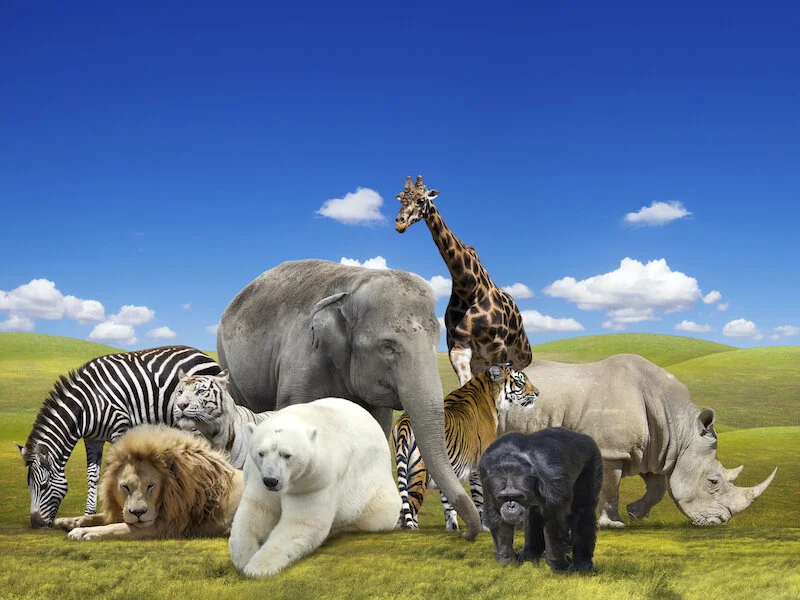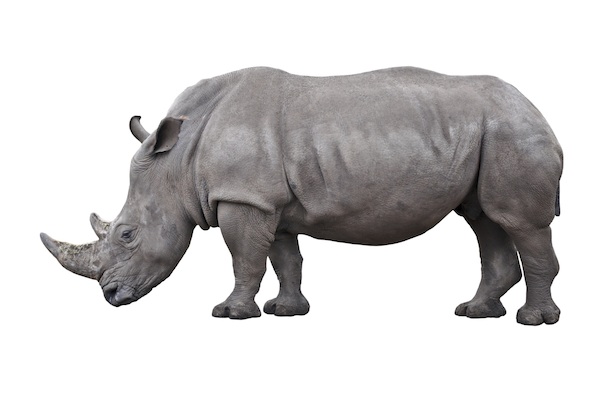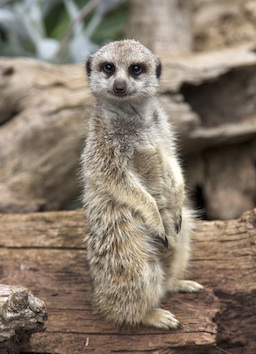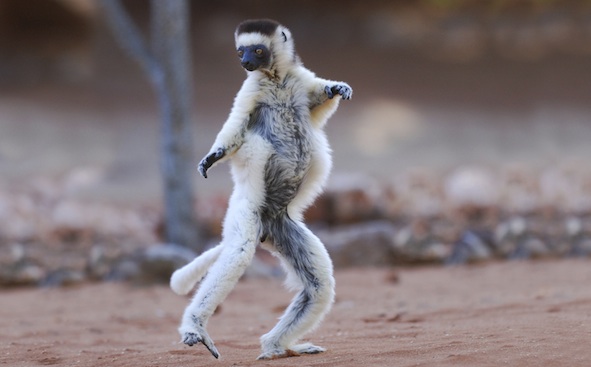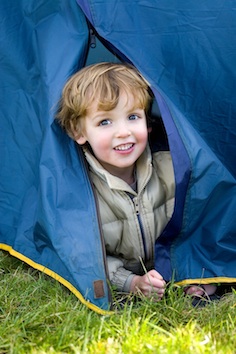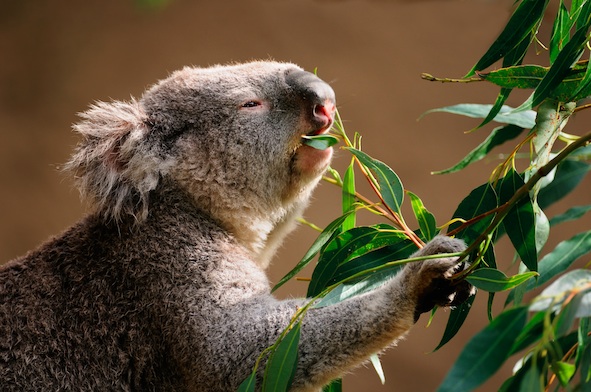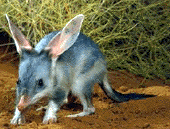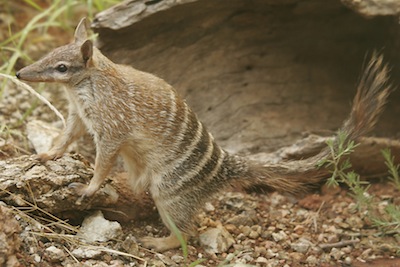Mammals are animals that have hair.
Babies drink milk from their mother's body.
Dogs, cats, elephants and people are all mammals.
Some mammals, keep their babies in a pouch.
The platypus and echidna are mammals that lay eggs.
Mammals are vertebrates, which means they have backbones.
The blue whale is the largest creature EVER to live on Earth. ©Getty Images
There are more than 4,000 different kinds of mammals, from the blue whale, the largest animal ever to live on the planet, to the tiny hog-nosed bat weighing around 1 gram!
All mammals have hair at some time of their life. In whales, the hair is only present before birth.
Mammals are warm-blooded, which means that their body temperature stays about the same, no matter how hot or cold their surroundings are. Their hearts have four sections, called chambers, for the blood to move through. They have larger brains than other animals.
An addax calf drinking milk from its mother. Photo©kidcyber
Mammals give birth to live young. They are the only animals that feed their young with milk from the mother's body. In most mammals, the females have a placenta which feeds the young as they grow inside the mother's uterus, or womb, before they are born. Some examples of this kind of mammal are dogs, whales and dolphins, giraffes and... humans!
Some mammals...
Marsupials
One group of mammals is called marsupial. Like other mammals, marsupials give birth to live young, but they give birth to young that are still very tiny and unformed. After the young are born, they climb up their mother's belly and into a pouch, which is like a pocket in the female's body. Inside the pouch, the young attaches itself to a teat and remains there for some time, depending on which kind of animal it is. Milk is fed to the baby through the teat.
Eastern grey kangaroo with joey. ©Getty Images
Any marsupial baby is called a joey.
A kangaroo inside the pouch 12 weeks after birth. ©Getty Images
Probably the best known Australian marsupials are the koala, kangaroo and possum. A very small number of marsupials, such as the numbat and the red-tailed phascogale, do not have a pouch. Most of the world's marsupials (about two thirds) are native to Australia, and many of them are endangered. The others, not found in Australia, are found in South America.
Some marsupials...
Monotreme
A platypus at the edge of a stream. ©Getty Images
Another group of mammals is called monotreme. They are mammals that lay eggs. There are only two monotremes: the platypus and the echidna.
The females usually lay two eggs at a time. The eggs have a leathery skin, like reptile eggs. After the eggs have hatched, the young are fed mother's milk. However, the females do not have teats, and the young lick milk that oozes from the skin of the mother's abdomen .
The platypus is the only Australian mammal that is venomous. The male platypus has a poisonous spur that it uses to fight off other males during breeding season.
An echidna looking for food. ©Getty Images
It’s a good idea to get information from more than one source!
Want to peek inside a marsupial’s pouch? Watch this video!
https://thekidshouldseethis.com/post/a-peek-inside-marsupial-pouches
Watch a video about mammals:
More educational games on mammals at NeoK12
Read more information about mammals:
https://australian.museum/learn/species-identification/ask-an-expert/what-is-a-marsupial/
https://australian.museum/learn/species-identification/ask-an-expert/what-is-a-monotreme/
Australia is a biodiversity ‘hot spot’ : it has more endemic (found nowhere else) animals than any other continent. Read about unique Australian animals:
https://www.australianwildlife.org/wildlife/
Read kidcyber pages about mammals, including marsupials and monotremes:
Choose from the Animals index

